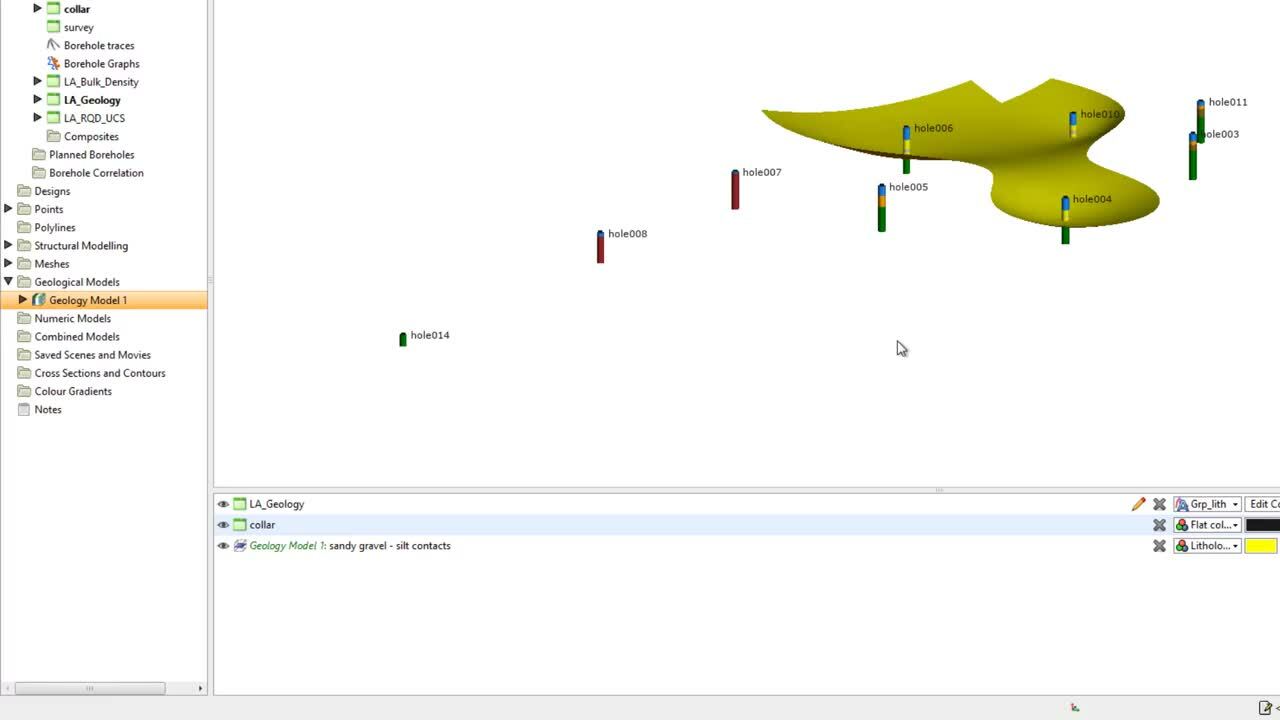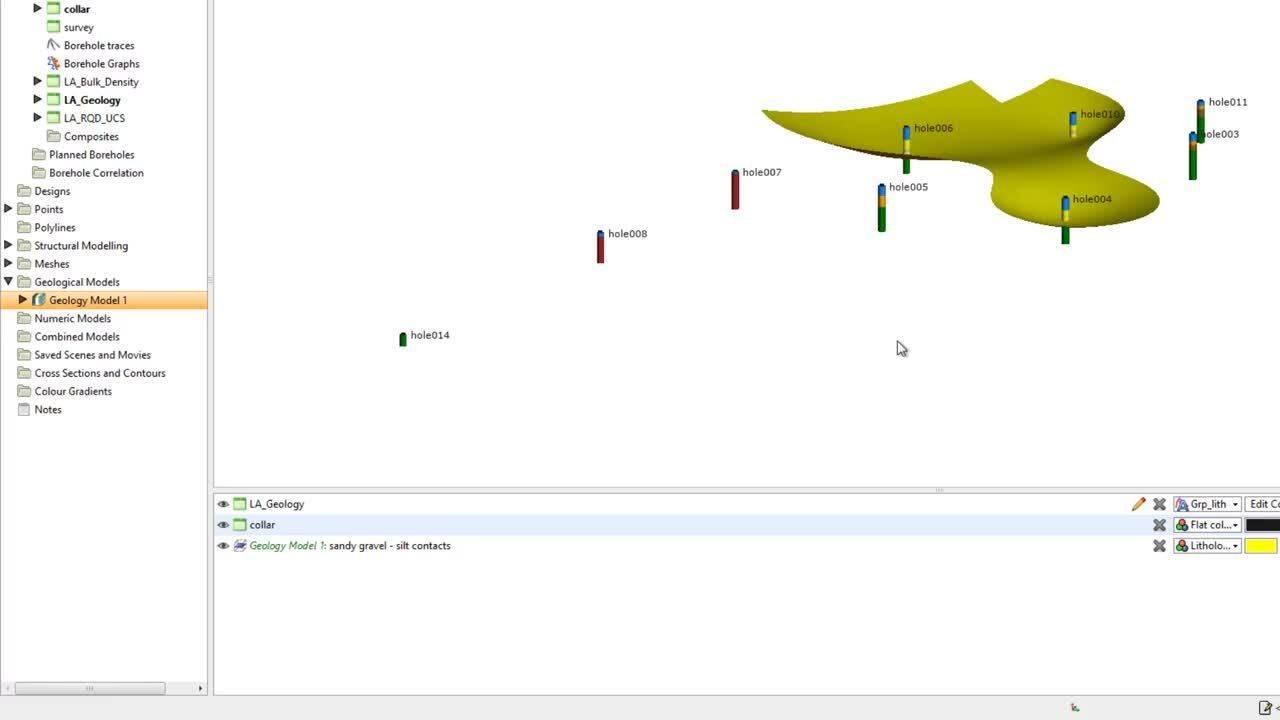Leapfrog creates surfaces directly from borehole data and as a result of that inclusive modeling workflow, the surfaces can be easily updated when new data becomes available.
Please note: In late 2020, Leapfrog Works received a significant update to its user interface, as well as two additional options for reloading and appending borehole data. We also now support multiple borehole datasets. While the current version of Leapfrog looks quite different from the version used to record this video, most of this content is still valid as the layout, location of functions, and workflows remain largely the same.
If you have initially imported your borehole data from OpenGround Cloud or from the Seequent Data Room, those two new import methods also have reload and append options analogous to those discussed in this video, for importing new boreholes into an existing project.
For more information about the latest new features, please see the Leapfrog Works product page (https://my.seequent.com/products/leapfrog-works/latest).
0:00 – Benefits of dynamic updating
0:45 – Adding new boreholes to the project: How to choose between Append vs Reload
0:58 – When to choose Reload
1:33 – When to choose Append
1:46 – Appending and reloading options
2:00 – Copying Geological Models
2:23 – Static copies – for model comparison
3:13 – Considerations when appending borehole data
4:30 – Dynamic updating of the model
5:05 – Manually freeze and unfreeze processing
6:31 – Adjusting the model extents to accommodate new borehole data
7:17 – Reviewing the updated model
Duration
8 min

See more on demand videos
VideosFind out more about Leapfrog Works
Learn moreVideo Transcript
The video transcript gets copy and pasted here





